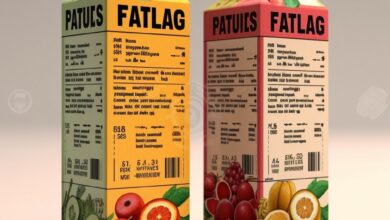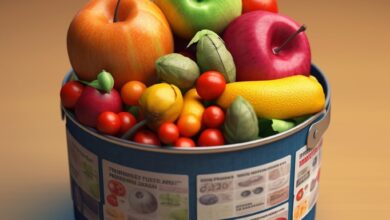Rice Paper Nutrition Facts
Rice Paper Nutrition Facts: Unveiling the health secrets of this Asian culinary staple, this article is a treasure trove of information. Dive in to explore how these thin, delicate sheets can impact your diet and health in surprising ways.
Rice paper, a staple in various Asian cuisines, particularly Vietnamese, is known for its unique properties and nutritional content. This article delves into the detailed nutrition facts of rice paper, highlighting its composition and health benefits.
What is Rice Paper?
Rice paper is a thin, translucent sheet primarily made from rice flour, water, salt, and sometimes tapioca. Tapioca enhances its elasticity and thinness, making it easier to handle and less prone to cracking. This ingredient also contributes to the translucent appearance of rice paper.
Nutritional Content of Rice Paper
Calories and Macronutrients
- Calories: A single rice paper wrapper, weighing about 12 grams, contains approximately 30-35 calories, making it a lower-calorie option compared to other types of wrappers like wheat-based tortillas or egg roll wrappers.
- Carbohydrates: Carbohydrate content varies across brands. For instance, Valcom brand rice paper (serving size of 20g) contains about 16.4g of carbohydrates, while the Bamboo-Tree brand (serving size of 68g) has approximately 59g of carbs.
- Protein: The protein content in rice paper is relatively low, with a single wrapper providing about 0.5 grams of protein.
- Fat: Rice paper is virtually fat-free, with less than 0.1 gram of fat per wrapper.
Micronutrients
- Sodium: Rice paper is generally low in sodium, typically containing about 25-35 milligrams per wrapper.
- Fiber: It is not a significant source of dietary fiber, containing less than 0.5 grams per wrapper.
- Sugar and Gluten: Rice paper is sugar-free and gluten-free, making it suitable for those with gluten intolerance or those monitoring sugar intake.
- Iron: It contains a small amount of iron, essential for blood production.
Health Aspects
- Low Glycemic Index: Rice paper has a low glycemic index, which means it won’t cause rapid spikes in blood sugar levels.
- Cholesterol-Free: Being cholesterol-free, rice paper is a heart-friendly choice.
- Vegan and Vegetarian-Friendly: Made from plant-based ingredients, it is suitable for vegan and vegetarian diets.
- Allergens: It is a low-allergen food, though individuals with rice allergies should avoid it.
Culinary Uses
Rice paper is incredibly versatile in cooking. It can be used for making fresh or fried spring rolls, and even in desserts. The nutritional content of dishes using rice paper will depend on the fillings and cooking methods.
Storage and Preparation
Rice paper should be stored in a cool, dry place. Once opened, keep it in an airtight container. To use, hydrate the rice paper by dipping it in warm water until it becomes pliable.
Incorporating Rice Paper in Your Diet
Given its nutritional profile, rice paper can be an excellent addition to a balanced diet. The low calorie and carbohydrate content make it an attractive option for weight management, while its gluten-free nature caters to those with specific dietary restrictions. The versatility of rice paper in culinary applications allows for a variety of healthy and delicious dishes, emphasizing fresh vegetables and lean proteins.
For those looking to explore the flavors and textures of Asian cuisine, rice paper offers a unique and health-conscious way to enjoy traditional dishes like spring rolls and wraps.
Conclusion
Rice paper stands out as a nutritious, low-calorie, and versatile food ingredient. Its unique composition, including the absence of gluten and low allergen content, makes it suitable for a wide range of dietary needs. Whether used in traditional Vietnamese rolls or as part of innovative culinary creations, rice paper offers a delightful combination of health and taste.






